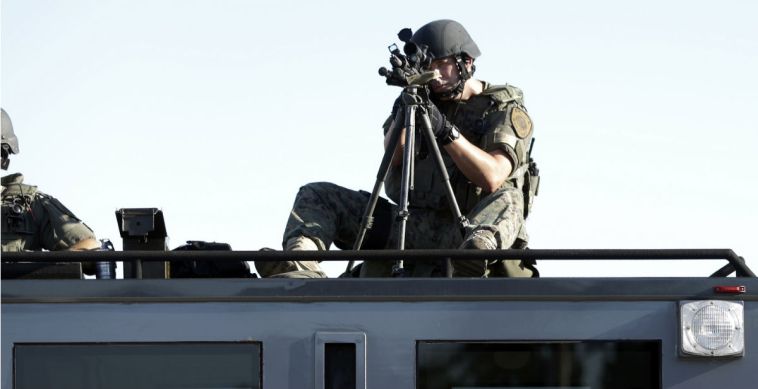Images of police outfitted in paramilitary gear clashing with protesters in suburban St. Louis after the weekend shooting death of unarmed black teenager is giving new impetus to efforts to rein in a Pentagon program that provides free machine guns and other surplus military equipment to local law enforcement agencies.
Videos By Rare
Rep. Hank Johnson (D-Ga.) says he plans to introduce legislation when Congress returns in September to curb what he describes as an increasing militarization of police agencies across the country.
“Our Main Streets should be a place for business, families and relaxation, not tanks and M16s,” Johnson said Thursday. “Militarizing America’s Main Streets won’t make us any safer, just more fearful and more reticent.”
Attorney General Eric Holder said he’s concerned that use of military equipment by police in Ferguson, Missouri, is sending a “conflicting message.” Holder said authorities there have accepted the Justice Department’s offer of crowd-control help as it continues to investigate the Saturday shooting death of 18-year-old Michael Brown.
The response by law enforcement to protests “must seek to reduce tensions, not heighten them,” Holder said.
A spokesman for the Defense Logistics Agency, the government’s combat logistics support agency, said the Ferguson Police Department has been part of the surplus equipment program. It received two tactical vehicles — both Humvees — as well as a generator and a trailer and may have received other equipment, DLA spokesman Joe Yoswa said.
The FBI and Justice Department are conducting a civil rights investigation into the shooting. Eyewitnesses have already been interviewed, Holder said.
“We need to demilitarize this situation this kind of response by the police has become the problem instead of the solution,” said Sen. Claire McCaskill (D-Mo.) who was in Ferguson on Thursday.
Johnson said his bill would limit the kinds of military equipment that can be transferred to local law enforcement agencies and require states to certify they can account for all equipment received.
He said he is disturbed by reports that some weapons and other equipment distributed to police agencies have gone missing. He also expressed concern that the trend toward militarizing has moved beyond local police departments and sheriff’s offices, saying Ohio State University recently acquired a mine-resistant, ambush-protected vehicle, or MRAP.
“Apparently, college kids are getting too rowdy,” Johnson said.
Sen. Rand Paul (R-Ky.) blamed the trend on the federal government.
“There should be a difference between a police response and a military response” to street protests, Paul, a possible GOP presidential contender in 2016, wrote in an opinion column in Time magazine.
“Washington has incentivized the militarization of local police precincts by using federal dollars to help municipal governments build what are essentially small armies — where police departments compete to acquire military gear that goes far beyond what most of Americans think of as law enforcement,” Paul wrote.
Johnson, a member of the House Armed Services Committee, cites a 24-year-old program that lets local police agencies acquire for free surplus military equipment ranging from blankets and bayonets to tanks. An Associated Press investigation last year found that a large share of the $4.2 billion in surplus military gear distributed by the program since 1990 went to police and sheriff’s departments in rural areas with few officers and little crime.
Rear Adm. John Kirby, a Pentagon spokesman, defended the program as useful because “it allows for the reuse of military equipment that otherwise would be disposed of.”
Asked whether events in Missouri had given the Pentagon reason to reconsider the program, Kirby said, “It is up to law enforcement agencies to speak to how and what they gain through this system.”
A spokesman for House Speaker John Boehner (R-Ohio) declined to comment on Johnson’s proposal.
In a statement about the shooting, Boehner said he supports “a full and thorough investigation” of the events surrounding Brown’s death, as well as subsequent actions, including the detention of journalists covering the protests.

